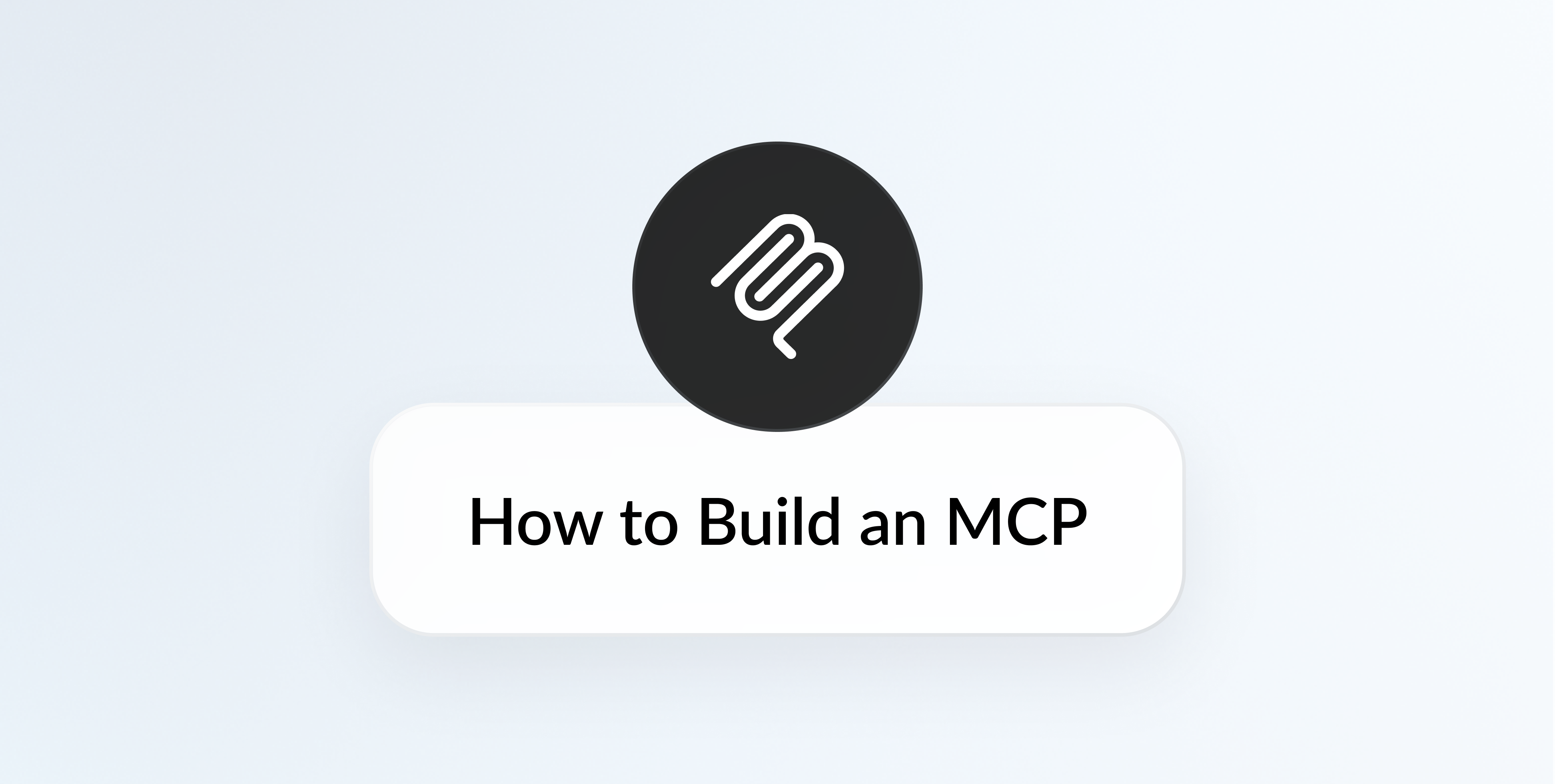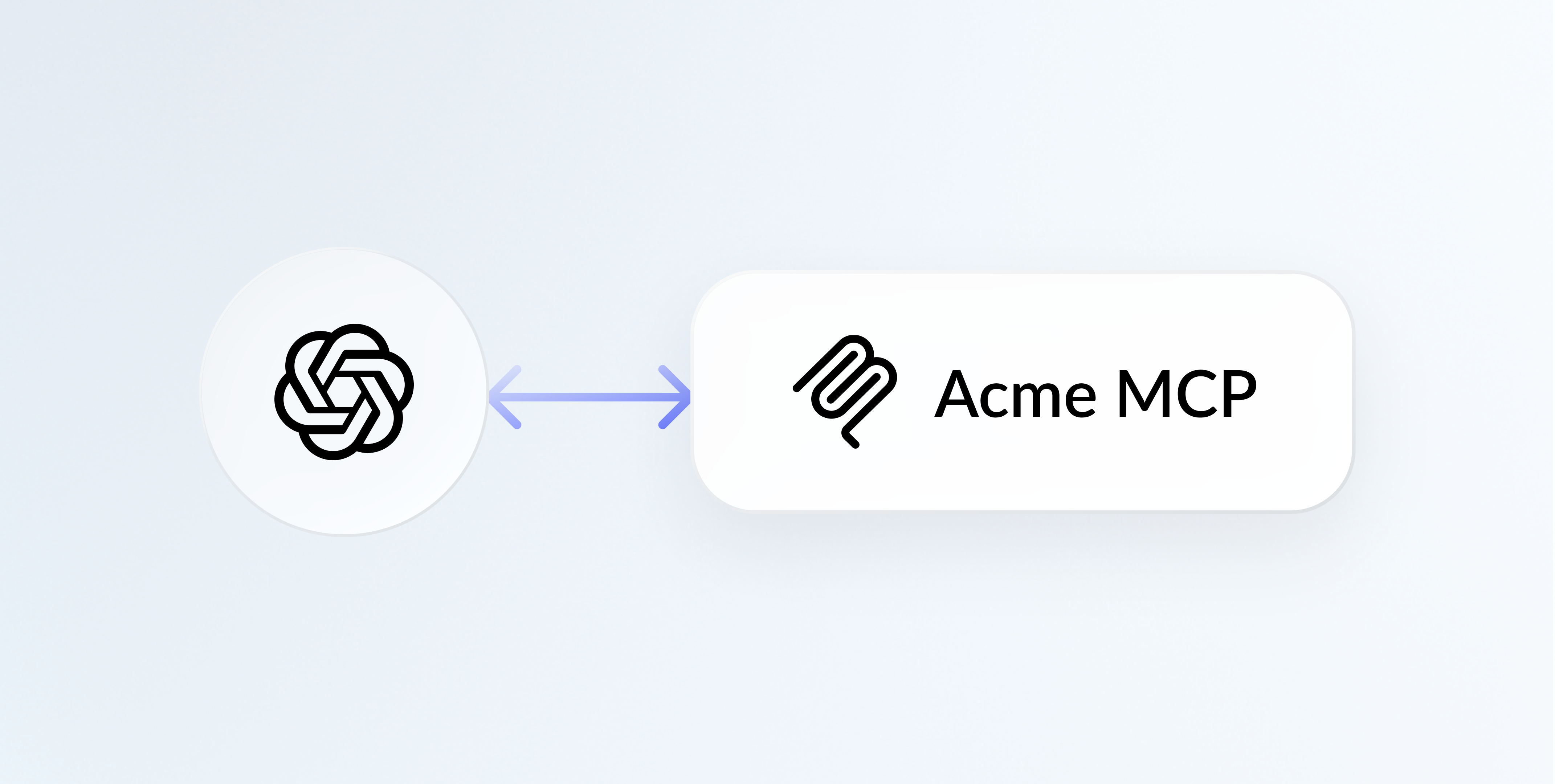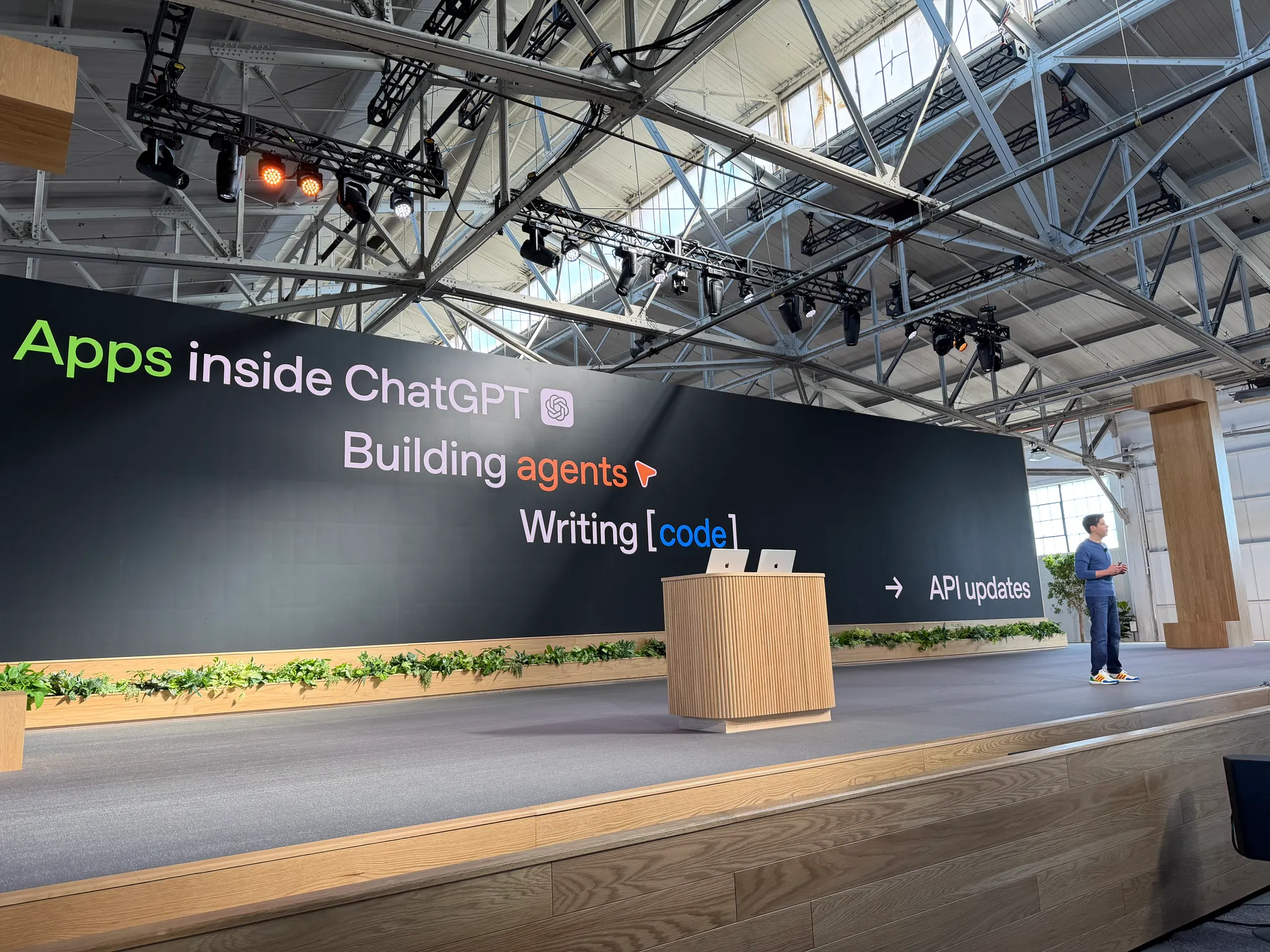MCP Explained… Again - Because This Time It’s Getting Real

At Ogment, we’ve been building in the trenches of AI-first infrastructure while watching Model Context Protocol (MCP) evolve from niche curiosity to a mainstream standard. For startups like ours, MCP isn’t just a theory, it’s a potential backbone that would let anyone expose product APIs and data as plug-and-play tools inside agents like ChatGPT or Claude. But MCP is controversial: some say it’s over-engineered, others say it’s immature.
In this post, we’ll cut through the hype, examine critiques, and share a bit about why we believe MCP could be central to a new, AI-driven, agentic internet.
The impact of MCP
In a nutshell, MCP is an open standard for connecting AI applications to external systems. Think of it as a common language or interface that lets AI models (like ChatGPT or Claude) access databases, web services, or even IoT devices on your behalf. Instead of coding each integration custom, a developer can expose an MCP server, and any AI agent (an MCP client) can discover and use it. It’s like giving AI assistants a set of standardized “plug-and-play” tools, hence the “USB-C for AI” analogy.
Why does this matter?
Today’s powerful language models are usually stuck in silos, limited to their training data. They often act as glorified chatbots, only able to fetch information for you. While already useful, MCP aims to break them out of their sandbox by standardizing two-way communication with the outside world.
For example, an MCP-enabled agent could pull the latest sales figures from a database and email a summary to your team, all through a consistent protocol that your existing tools would use. The model now becomes an orchestrator, rather than an information pit you have to copy-paste information in and out of.
In theory, this means:
- For AI products: Access to a growing ecosystem of ready-made tools and data, making assistants more capable out-of-the-box.
- For end-users: Smarter, more helpful AI that can actually take actions (like scheduling meetings or querying internal data) instead of just chitchat. No need to go back and forth between 20+ apps and dashboard to get work done.
- For builders: An entirely new interface to your product, where users interact through an AI model, bypassing the traditional interaction surfaces you have with your customers.
No wonder MCP has generated so much excitement. It promises to let any company, from established SaaS businesses to independent consultants, deliver AI features that feel truly integrated and “alive” in the user’s world, rather than confined to canned knowledge. By mid-2025, MCP had rapidly grown into the de facto standard for plugging tools into AI agents.
At Ogment, this is exactly the role we want MCP to play: enabling you to turn product APIs and data into AI-native experiences. This way, users can invoke features of your platform from inside their favorite AI models, without writing client libraries or deploying custom integrations.
Dreams and Realities of MCP
Whenever a technology rises this quickly, the backlash isn’t far behind. MCP does have its share of skeptics alongside the vocal, bullish community of early adopters. Interestingly, the criticisms run in opposite directions. Depending on who you ask, MCP is either over-engineered and unnecessary, or under-engineered and dangerously incomplete. Let’s unpack some of the main points of contention.
The Hype Train
MCP has sensational appeal in tech circles, but limited real-world deployment. Early on, most of the activity lived through countless demo servers and broken GitHub projects but relatively few end-user deployments. This perceived gap between developer buzz and actual adoption fuels skepticism.
In reality, the value of a protocol often emerges after ecosystem adoption, not at day one. The disconnect isn’t that MCP is useless; it’s that few teams have yet invested in making connectors durable. The flurry of activity to get things off the ground with MCP is healthy, but now the real work starts. We need to turn experiments into a reliable reality.
An Immature Standard
On the flip side, enterprise architects have slammed MCP for not doing enough. For example, Julien Simon argued that MCP’s design “overlooks four decades of hard-won lessons from distributed systems”. Unlike more mature frameworks, early versions of MCP lack things like strict type checking, robust error handling, consistency enforcement, and standardized security. Even client implementations were incomplete and poorly documented, with features described in the specifications (for example, elicitation) just being silently discarded. Essentially, it traded rigor for ease-of-use.
To critics, such omissions aren’t academic details; they’re the sort of enterprise-grade features that prevent painful production failures when systems scale up. They’re not wrong: MCP trades friction for flexibility, and that’s a double-edged sword.
For example, the initial MCP spec didn’t even include an authentication mechanism, a choice that led to each server inventing its own (sometimes flimsy) auth, until OAuth was later added in a hurry. However, this speed also shows how vibrant the community around this protocol is. With active working and interest groups, the standard is rapidly evolving.
Like Javascript in its day, there are many other, likely more mature solutions out there. Over time however, we have largely converged to what is objectively a flawed language. MCP’s fate will depend less on its design elegance and more on whether builders rally behind it. We’re betting that MCP will learn and adapt, blending its early simplicity with the robustness required for wider adoption. Where there is friction there is value, as much as we might be irked by inelegant solutions.
Security & Abuse Concerns
Another angle of criticism centers on security and control. MCP makes it trivially easy to hook up third-party code as “tools” for your AI. That’s a double-edged sword. On one hand, a lone developer can spin up a local MCP server that, say, reads your calendar or controls your smart lights, and voila! Your AI assistant can do it. On the other hand, that means users might be encouraged to download and run random MCP servers from the internet. Running unknown code on your machine is risky, period. MCP’s design (especially with local stdio servers) has created a “low-friction path for less technical users to get exploited on their local machines,” as one security analyst noted.
Moreover, many community-contributed MCP servers simply trust whatever input the AI gives them. If an AI (or an adversary prompt) decided to misuse a powerful tool, the protocol itself won’t step in; it’s on developers to implement safety checks. Chaining is a major concern: you might have designed your API on its own, without imagining its outputs could be implicitly connected to any other external tool. An AI agent could, in theory, batch delete files or send emails if it has a connected tool, and the user’s only real safeguard is whether the agent asks permission. Skeptics argue that a more mature system would enforce such trust boundaries by design.
This is undeniably a concern, in particular as MCP enters the enterprise world, and there remains a long way to go. Local servers have thankfully started to fade out as remote connectors have gained momentum and maturity. Third party solutions have gained momentum, as evidenced by Snyk acquiring Swiss company Invariant Labs, as have best practices.
The Nuanced Truth
Paradoxical as it sounds, both sides have a point. MCP is incredibly easy to get started with, that’s part of the design philosophy, but that simplicity brings pitfalls. Practically anyone can write a basic MCP tool in an afternoon, yet making that tool production-grade could require re-inventing wheels (security, reliability, monitoring) that older frameworks already solved. Even then, if you simply auto-wrap every REST endpoint in your company with MCP, you will overwhelm your poor AI agent with too many choices. It is not designed to interact as a machine: agents deal in actions and user intent, not data contracts.
In fact, early adopters learned that blindly converting REST APIs to MCP can backfire. An API built for human developers (with dozens of granular endpoints) will “drown” an LLM agent in options and context tokens, making it less effective, and provide a machine-oriented interface to agents who work with actions and intent. For example, Notion had to re-build their MCP interface from scratch.The best MCP implementations often require editing or curating the interface, creating new compound tools, simplifying endpoints, adding semantic names, mixing and matching functionality, improving context and documentation, so the AI can focus.
This is a new kind of design work: creating machine-first interfaces rather than human-centric ones. It’s no surprise that MCP’s critics come from all angles: some feel it’s too much new complexity, while others feel it doesn’t handle complexity enough. This is a valid question, should this be encoded in a protocol or live in the application layer?
At Ogment, we’re building the layer that makes MCP practical. It’s a toolkit that turns your existing APIs into agent-ready MCP connectors in minutes, with guardrails, schemas, and usage analytics built in.
Why We’re (Cautiously) Optimistic
Given the noise, why are we investing in MCP? Because we see it as infrastructure with compound value, not a silver bullet.
Simply put, we believe in the long-term potential of a standardized AI integration layer, especially now that the dust is settling. Here’s a bit of the upside we see, pragmatically speaking:
- Bridging the Production Gap: Enterprises often struggle to take AI pilots and connect them to real systems. Bloomberg’s internal use of MCP proved illuminating: by decoupling agents from backend systems, they dramatically reduced integration friction and let engineers reuse connectors across domains. MCP turned custom hacks into modular building blocks that scale. (See their public case study)
- An Ecosystem of Reusable Tools: At Ogment, one of our goals is to make it trivial for customers to turn their own APIs or datasets into MCP connectors. We believe the future involves a marketplace of domain-specific MCP tools. Already, the broader AI community is publishing connectors for things like Notion, Slack, BigQuery, and more (via MCP libraries). Ogment both consumes and contributes to this ecosystem, aiming to make our platform more composable and agent-friendly over time.
- Evolution, Not Revolution: Despite early missteps, MCP is evolving. Remember those complaints about missing features? Many are being worked on, either within the MCP spec or as extensions. For example, better error-handling conventions and tracing hooks are on the roadmap, often informed by lessons from gRPC and REST, as well as advanced agentic features like long running tasks and more support for user elicitation. The current state of MCP isn’t the final word, it’s a 1.0 (or 2.0) that’s rapidly improving in response to real-world use.
- Alignment with AI’s Future: The most exciting thing about MCP is not its current utility, but what it hints at: agents that discover new tools at runtime, share context, and delegate tasks. As AI systems move from monolithic models to ecosystems of collaborating agents, a standard like MCP could serve as the connective tissue. That vision aligns deeply with Ogment’s mission: making AI-native product experiences, where our APIs and data are first-class tools for agents to orchestrate. Extensions like MCP-UI even promise to bring even more expressivity to AI-native applications.
Conclusion
MCP is flawed, opinionated, and evolving, and that’s exactly why builders should care. The critiques are real and meaningful, and we don’t dismiss them. At the same time, tools are already being built, momentum is accelerating, and OpenAI’s support is a game changer.
For Ogment, MCP isn’t just theory: it’s a strategic bet on how our APIs and data will be accessed by agent-based interfaces. We believe MCP has the potential to become the de facto substrate for AI earning interoperability. So while we don’t expect it to be perfect today, we’re actively building it, learning from its failures, and aiming to be among the platforms that define its future.
If you’re a founder or product leader thinking about AI agents, MCP is a lever worth exploring now — not because it’s mature, but because it’s shaping the future. And if you want to explore turning your product into MCP connectors, we’d love to talk.










.jpg)